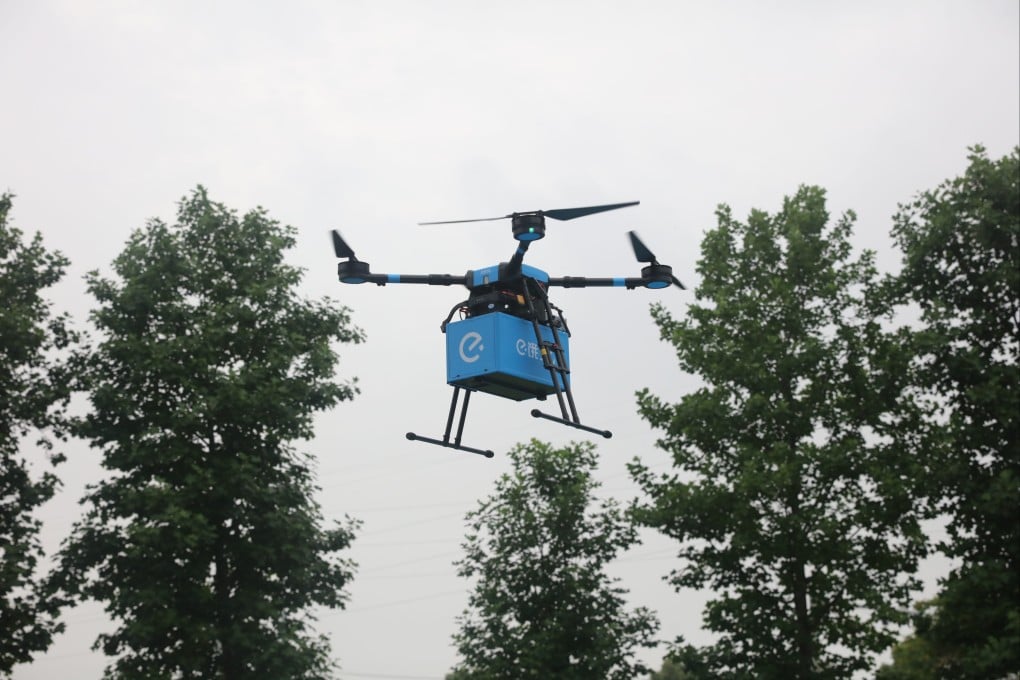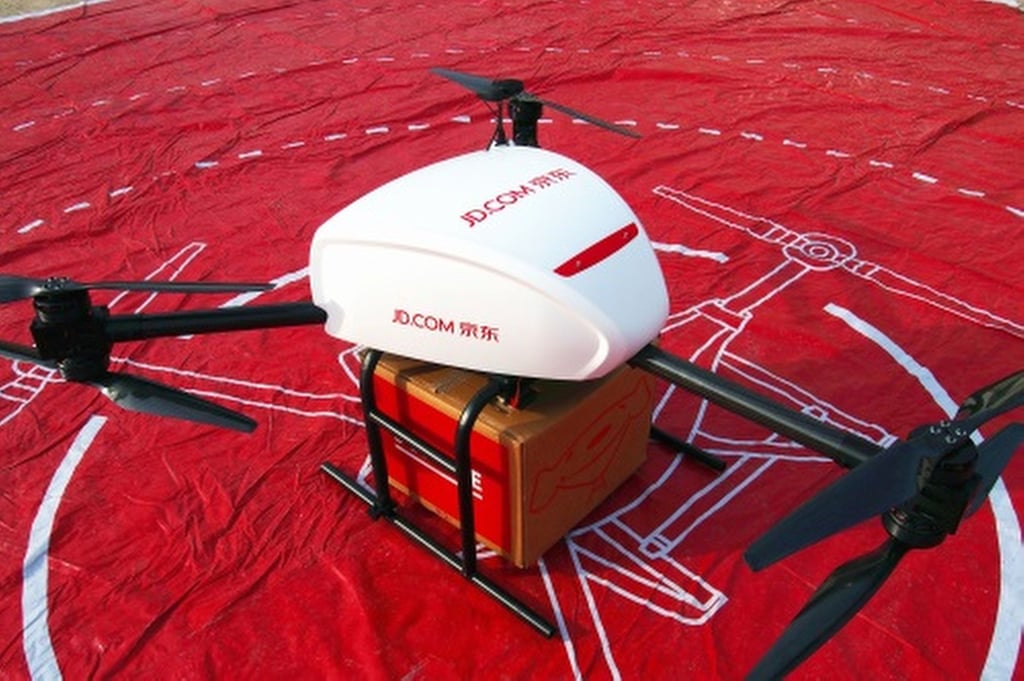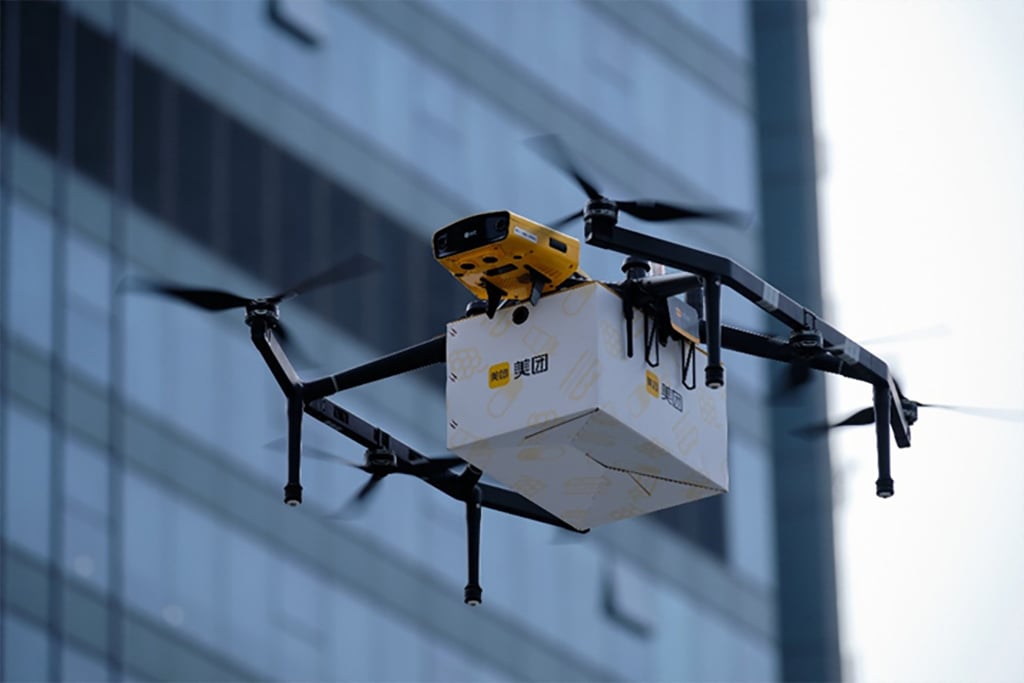Coronavirus: China’s drones fail to deploy during Shanghai lockdown as aerial delivery fleet grounded by tight airspace and flight rules
- Once hailed as the moon shot in the world’s largest e-commerce and delivery market, drones were mostly grounded and confined to discreet trials in locked-down suburbs
- Autonomous delivery vehicles were seen in some areas of the city during the lockdown, while drones sat idle in warehouses

Aerial delivery drones were conspicuously missing during Shanghai’s month-long Covid-19 lockdown, even though 25 million residents in one of China’s biggest population centres struggled for daily deliveries of fresh food and essential medical supplies.
Once trumpeted as the “moon shot” in the world’s largest e-commerce and delivery market – with the potential to fly a package or a meal box to a customer’s doorstep – drones were mostly grounded by regulations and confined to discreet trials in locked-down Shanghai suburbs. Autonomous delivery vehicles were seen in some areas, while drones sat idle in warehouses.
“There is no really big reason to use drones in this specific stage other than as a test and for publicity,” said DroneAnalyst’s research head and former DJI employee David Benowitz, adding that drone makers around the world are still in the initial stage of tests in pilot zones.
Every major Chinese e-commerce or meal delivery operator has a fleet of unmanned aerial vehicles (UAVs), as drones are called in China. But their use in China’s tightly regulated airspace has been limited to test flights in sparsely populated areas away from the busiest air corridors, as the Civil Aviation Administration of China (CAAC) plays catch-up with draft guidelines on UAV usage published in 2019.

“China has strict surveillance over UAVs, and is very careful with issuing business licenses to logistics companies,” according to Zhu Changci, an analyst at the market research firm LeadLeo. “That placed a big hurdle for UAVs in commercialisation.”

Mao outlined three challenges of operating UAVs in urban areas: real-life scenarios, safety and reliability, as well as user experience.